Answering the question through firsthand experience, practical tips, and cultural insights.
Santo Domingo wasn’t love at first sight for me — but it didn’t take long to win me over. I arrived alone, a little unsure of what to expect, and quickly found myself wrapped in the city’s contradictions: its historic beauty alongside its unpolished grit, its colonial grandeur set against the everyday hustle of its streets.
Zona Colonial is where most visitors start, and for good reason. It’s stunning. Cobbled streets lead you through the oldest European city in the Americas, past crumbling facades, grand plazas, and cathedrals that echo centuries of history.
But for me, Santo Domingo revealed its heart beyond the postcard-perfect views. It was in the late-night dancing spilling out of corner shops, in the crowded markets where Dominican and Haitian locals exchanged goods, and even in the warnings — like the woman in Chinatown who quietly advised me to wear my daypack on my front, eyeing a couple of would-be pickpockets behind me.
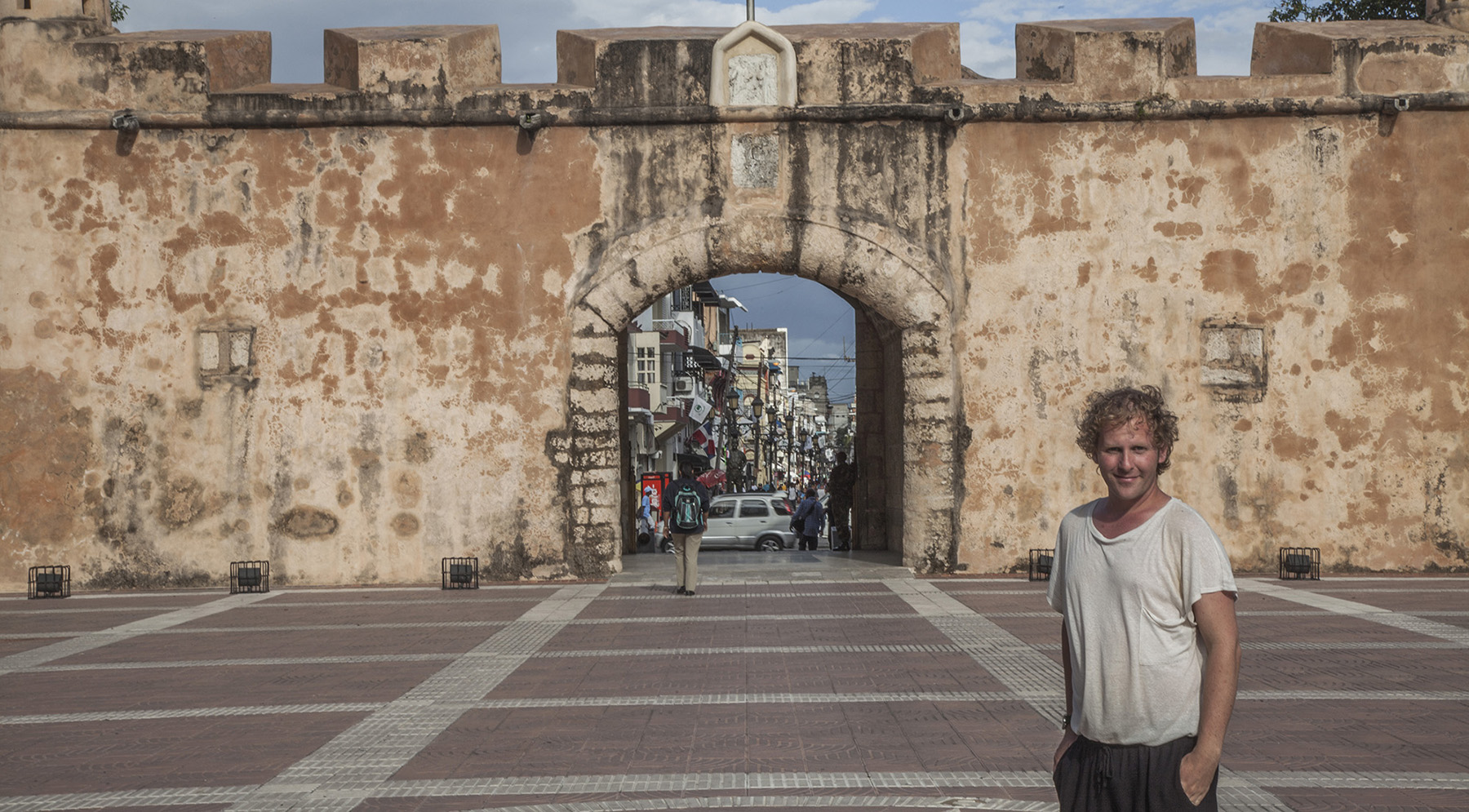
By day two, I had a friend with me — Sofia — and together we soaked up the city’s infectious energy. We met another traveller soon after, and the three of us would go on to explore the Dominican Republic together. But those early days in Santo Domingo left their mark: the city’s edges may be rough, but its charm is undeniable.
If you’re looking for polished luxury, this might not be your place. But if you want somewhere that pulses with history, character, and life — where the streets hum with music, markets overflow with fruit sellers, and smiles are as common as street art — Santo Domingo is absolutely worth visiting.
Disclosure: This article contains affiliate links. If you make a purchase through these links, I may earn a small commission at no extra cost to you. Thank you for supporting my blog!
Why You Should (or Shouldn’t) Visit Santo Domingo
For me, Santo Domingo wasn’t a postcard-perfect getaway — and that’s exactly what made it memorable.
When I arrived alone, the city hit me with a mix of rawness, character, and energy. The Zona Colonial, with its cobbled streets and crumbling beauty, was where history whispered from every corner, but the real heart of Santo Domingo stretched beyond its tourist-friendly face.
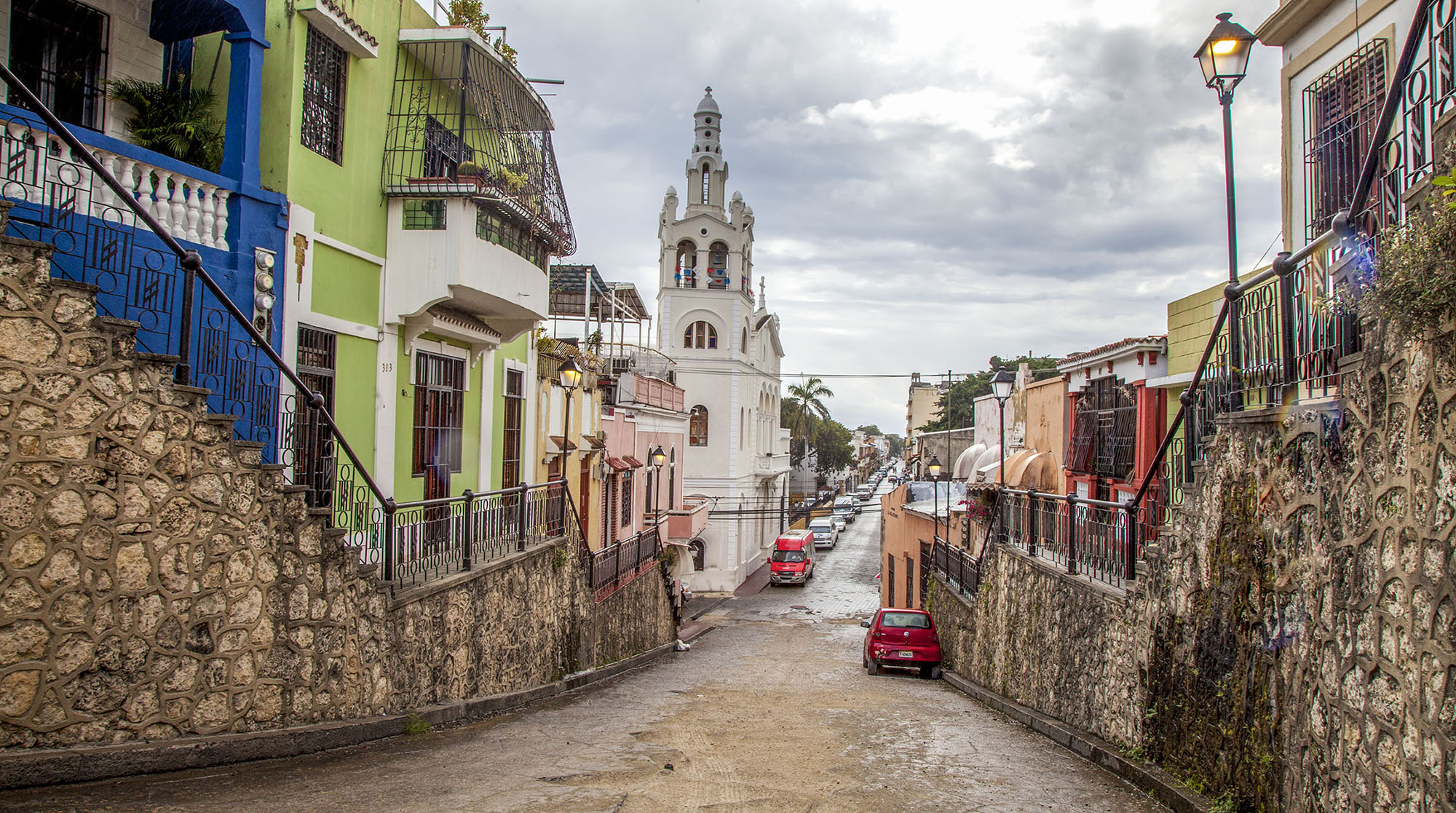
It was in the late-night merengue blasting from shops, locals dancing like no one’s watching. It was in the interactions — a woman in Chinatown telling me quietly to keep my daypack in front of me: "People are watching." A small warning, but the kind that makes you feel you’re really there, in it, part of the rhythm of the city.
Santo Domingo is not for everyone.
It’s raw. It’s loud. It’s alive. You’ll find the cracks alongside the colour, the bustling streets lined with Haitian fruit sellers, graffiti-clad walls, and humble markets. The men are beautiful, the heat relentless, and yet there’s a soulful character to it all that’s hard to replicate.
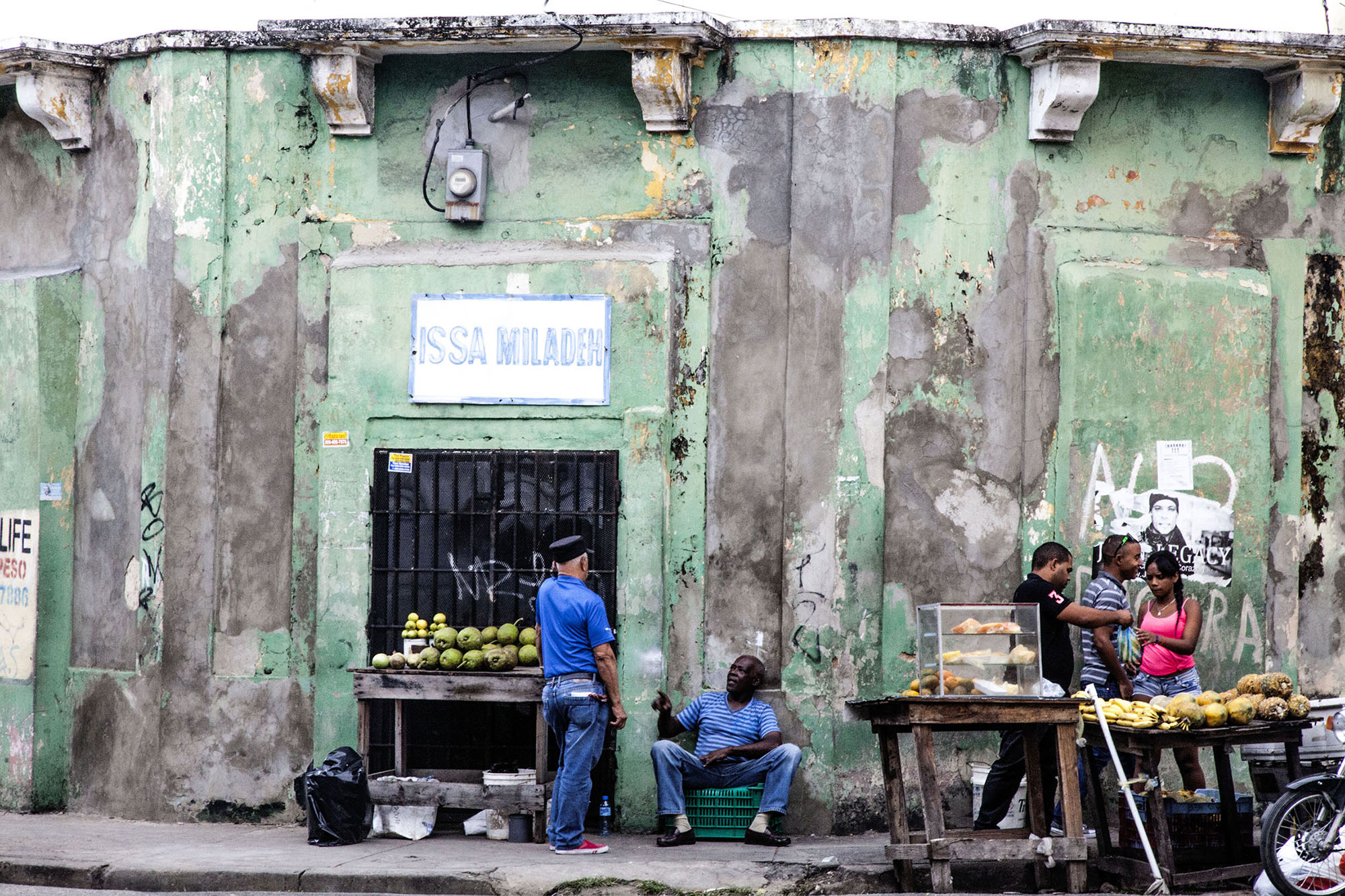
So is Santo Domingo worth visiting? It depends on what you’re looking for.
If you want pristine beaches and resort bubbles, you might want to skip ahead to Punta Cana. But if you’re craving culture, history, and a little chaos — here’s what you need to know before deciding.
Save this article for future reference!
The Heart of Santo Domingo — Zona Colonial
This is where history meets modern life.
Step into History at UNESCO’s Zona Colonial
Walking through Zona Colonial feels like stepping into a different century, where cobbled streets weave between faded 16th-century facades. There’s a tangible sense of history here — a mix of grandeur and rough energy.
Landmarks like Alcázar de Colón, the once-stately home of Christopher Columbus’ son, Diego, tell stories of the city’s colonial roots. Though partially restored, the stone walls still hold a kind of timelessness.
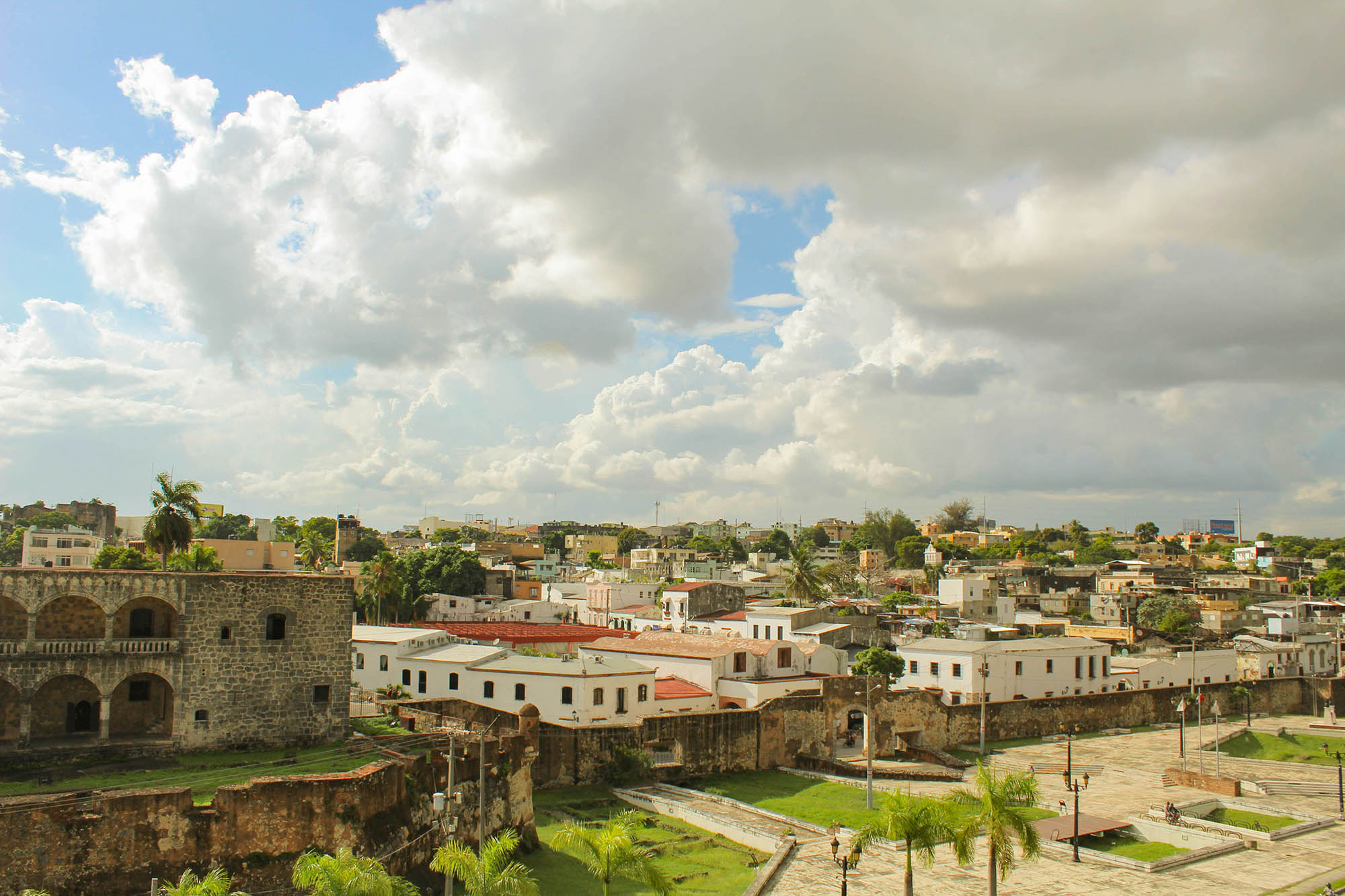
Nearby, the Catedral Primada de América, the oldest cathedral in the Americas, stands as a testament to Santo Domingo’s historic significance, its ornate design as humbling as it is impressive.
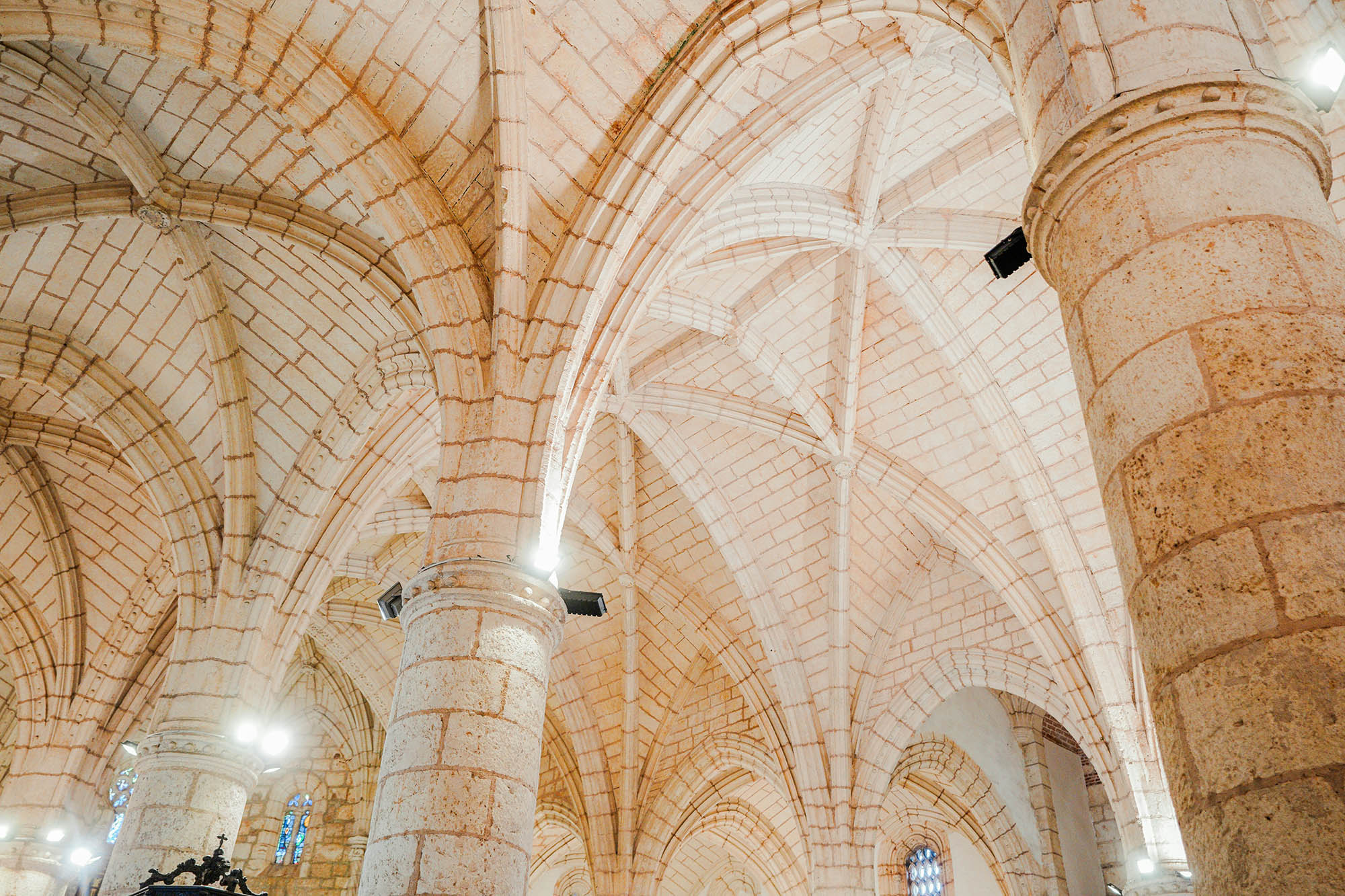
But was it magical? My honest answer — it depends. Some streets buzz with charm: locals chatting on corners, music spilling from open windows, and vendors calling out to passing tourists. Others feel quieter, almost staged for postcards.
It’s this contrast, though, that makes Zona Colonial special: authentic moments tucked between its polished corners.
Cafés, Art, and Hidden Courtyards
It’s not just history that draws you into Zona Colonial — it’s the unexpected discoveries. My favourite spot? Corner Café, a small gem tucked into the Callejón de Regina under a natural canopy of vibrant, blooming flowers. It’s the kind of place where time slows down: faded brick walls and overgrown vines seem to lean into each other, creating a shaded terrace that feels like it was designed for lingering.
Spend time here. Order a cold drink and a fresh pastry, and watch the city breathe around you. The café’s handmade menu is packed with options: natural juices, sweet pastries, savoury paninis, and even hummus — all made with care in their own kitchen.
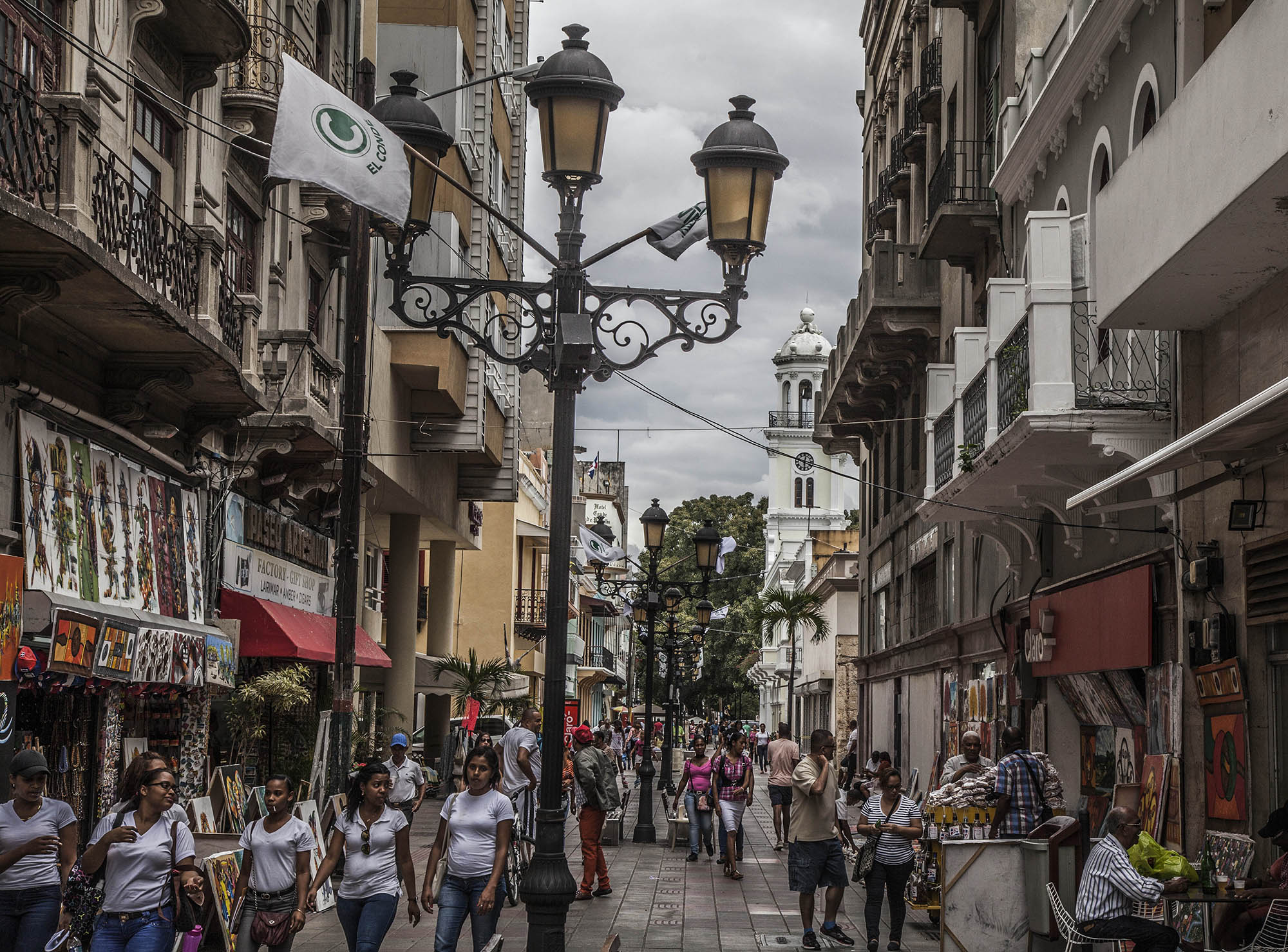
Then there’s Calle El Conde, a pedestrian street where modern life unfolds against colonial backdrops. Look beyond the tourist shops and you’ll find vibrant street art splashed across alley walls, as if claiming space in an otherwise centuries-old setting.
This is where Santo Domingo feels alive. Don’t rush it. Take a seat in a courtyard café or along a shaded bench, and let the rhythm of the city play out in front of you — from boisterous vendors to the quiet hum of locals carrying on with their day.
Beyond the Tourist Trail — Santo Domingo for Adventurous Travellers
Santo Domingo’s edge and soul live beyond its polished plazas.
Mercado Modelo — Dive into Local Life
Stepping into Mercado Modelo is like walking into organised chaos — and that’s part of its appeal. Stalls overflow with handmade crafts, colourful paintings, Dominican cigars, and the earthy scent of fresh produce. The narrow aisles pulse with energy: vendors calling out deals, hands weaving straw hats, and shelves stacked with trinkets you didn’t know you needed.
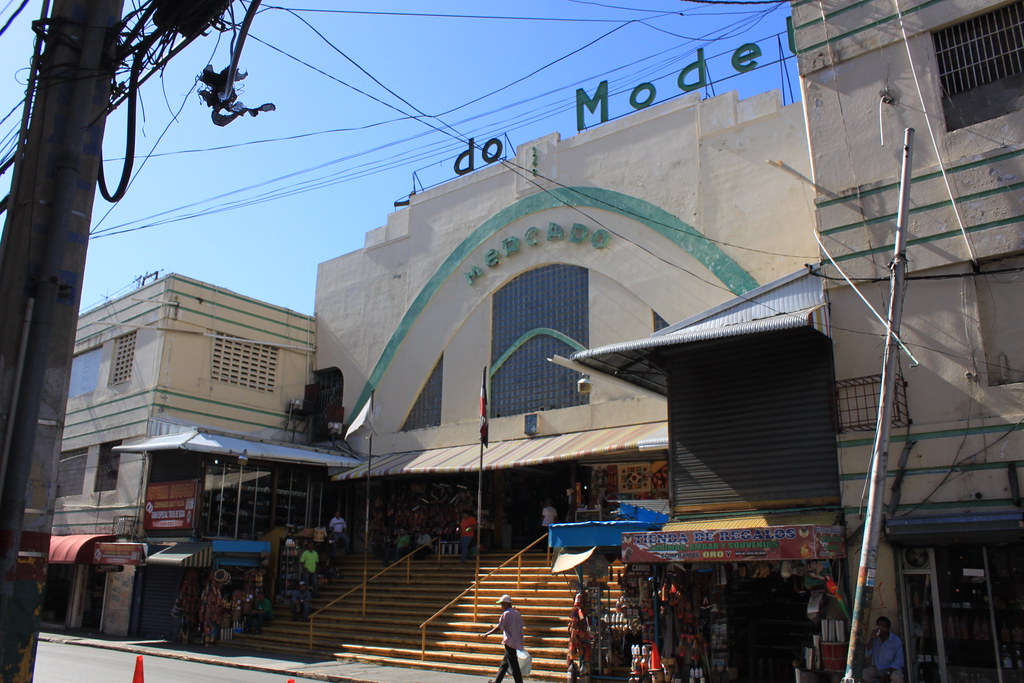
I remember bartering (badly) for a hand-carved mamajuana bottle — the Dominican drink said to “cure everything.” The vendor laughed at my attempt and threw in a small wooden turtle “for good luck” after we settled on a price. It’s those human interactions that make Mercado Modelo more than just a market — it’s a slice of daily life, raw and unfiltered.
Tip: Don’t shy away from haggling; it’s expected and part of the fun. But keep it friendly — a smile goes a long way here.
Malecón — Walk Along the Seafront
The Malecón, Santo Domingo’s famous seafront promenade, feels like a breath of fresh air after the crowded markets and narrow streets of Zona Colonial. I walked its length at sunset, the Caribbean Sea stretching endlessly to one side while the city hummed to life on the other. Couples strolled hand-in-hand, kids raced bicycles, and vendors set up makeshift grills, the smoky aroma of chicharrones wafting through the breeze.
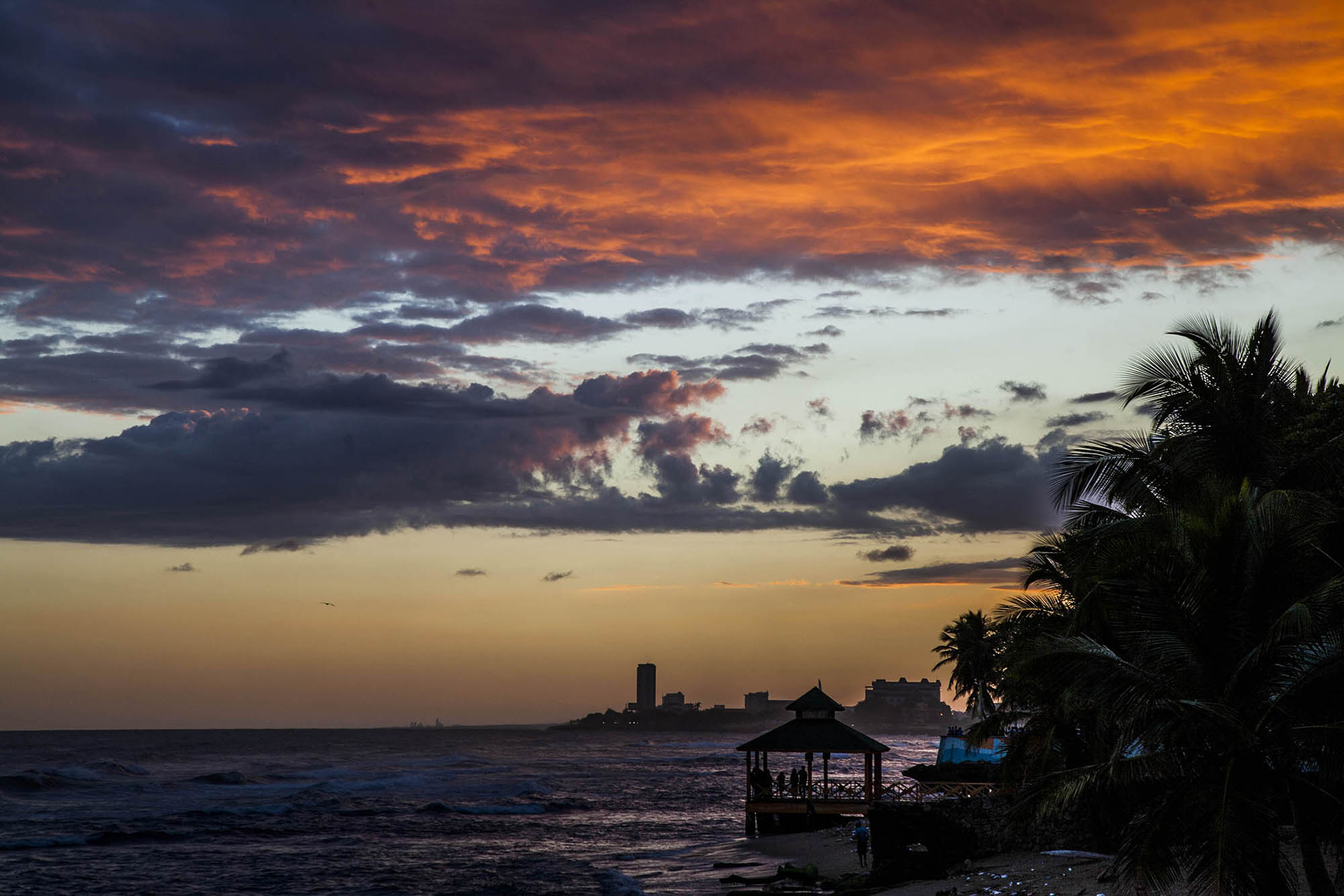
What I loved most about the Malecón is its simplicity — it’s where locals come to unwind, socialise, and enjoy the sea breeze. Unlike the history-packed core of the city, the Malecón is all about space and rhythm, with fewer tourists and more room to breathe.
Don’t miss: Grab a drink or a snack from one of the street vendors and find a bench. Watching the sun dip below the horizon here is a moment worth slowing down for.
A Glimpse of Everyday Life
Santo Domingo’s edges are undeniably raw, but they tell a story — not of postcard-perfect moments, but of real lives being lived. Walking the streets, I saw local fruit vendors and immigrants — often Haitian — pushing carts of pineapples and papayas under the relentless heat. The hustle is palpable, and so is the struggle.
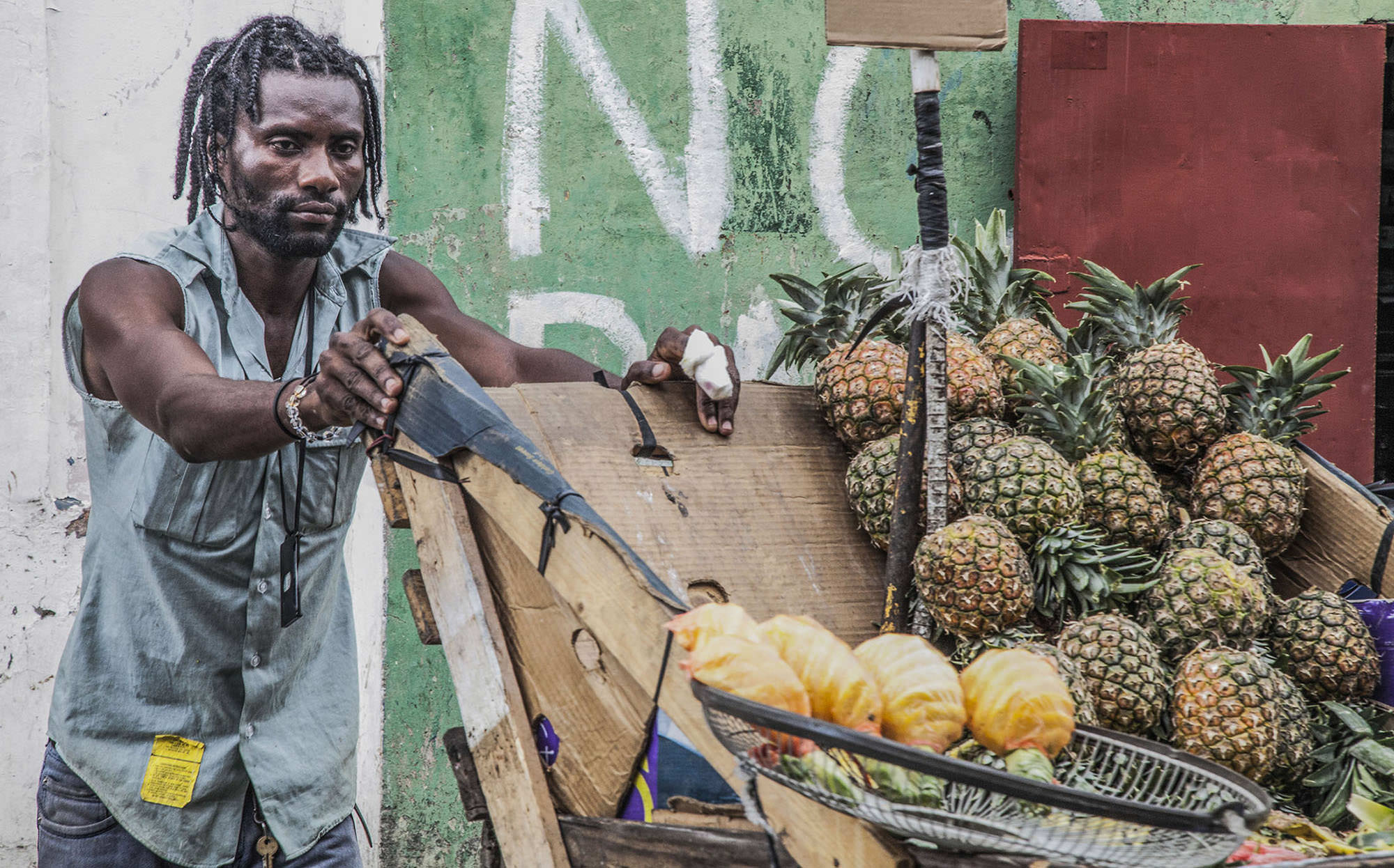
These moments gave the city a texture I wasn’t expecting — a mix of resilience, colour, and determination. It reminded me that Santo Domingo, like so many places, isn’t a glossy travel brochure. Its beauty is unpolished, its people are working hard, and for visitors willing to look beyond the surface, there’s something deeply human to connect with here.
Want a glimpse of the Dominican Republic in motion?
Check out this vlog for a visual journey through the country, from bustling streets to stunning landscapes. It’s a great way to see what makes the DR so vibrant.
Is Santo Domingo Worth Visiting for Nature Lovers?
Even in a bustling capital, nature finds a way to shine.
Beaches Near Santo Domingo
If you’re craving a break from the city, nearby beaches like Boca Chica and Juan Dolio offer a quick escape. Boca Chica is the closest — just a 30-minute drive — with calm, shallow waters perfect for wading. But here’s the truth: it’s often crowded, especially on weekends, and the “Caribbean paradise” vibe can feel diluted by hawkers and noise.
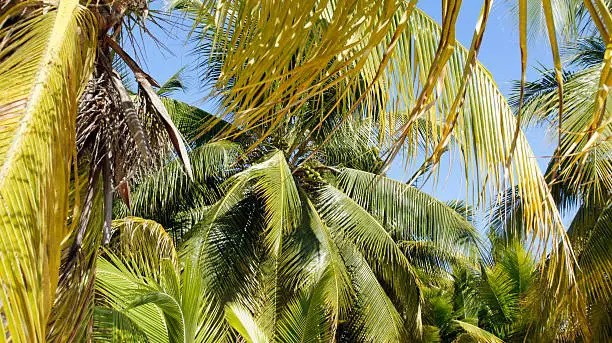
Juan Dolio, on the other hand, is quieter and a bit more polished. It’s further out (about an hour from Santo Domingo), making it a better option for a peaceful day trip. You’ll find clearer waters, fewer crowds, and just enough beachfront restaurants to make it worth the trip.
My Take: Neither beach will rival Punta Cana’s pristine coastlines, but for a quick dose of sea and sand, they do the trick. If you go during the week, you’ll avoid the worst of the crowds.
Day Trip Idea: Los Tres Ojos National Park
Just 15 minutes from the city centre, Los Tres Ojos National Park is a world away from Santo Domingo’s urban sprawl. This limestone cave system hides four stunning lagoons, three of which can be accessed on foot (“tres ojos” means “three eyes”). The water glows in shades of turquoise and emerald, reflecting light that sneaks in through gaps in the caves.
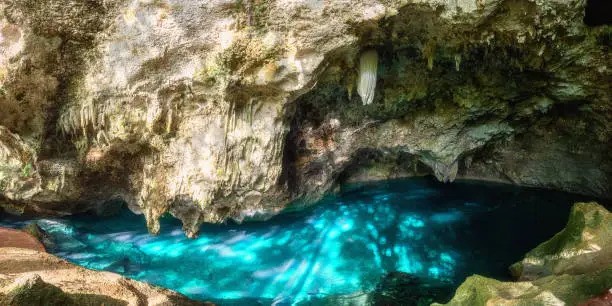
Walking down into the park feels like stepping into another dimension — cool, damp air hits your skin, and the sound of dripping water echoes off the cavern walls.
Tips for Visiting:
- Wear comfortable shoes: There are lots of stairs and uneven ground.
- Bring cash: The entry fee is small, but cards aren’t accepted.
- Don’t forget your camera: The natural light creates incredible photo opportunities.
- Timing matters: Early mornings are quieter and less humid.
Why Go: Whether you’re a nature lover or just need a break from the city’s chaos, Los Tres Ojos delivers a peaceful, almost otherworldly experience you won’t expect so close to the capital.
Save this article for future reference!
Food and Culture in Santo Domingo — What to Eat and Experience
Dominican culture comes alive through its food and music.
Taste the Local Cuisine
Food in Santo Domingo is as much about community as it is about flavour. Traditional dishes are hearty, satisfying, and a reflection of the island’s rich roots.
- La Bandera Dominicana: The “Dominican Flag” might not look like one, but this national dish — rice, beans, and meat (usually chicken or beef) — is a staple on every table. I had it at Mesón de Luis on Calle Hostos, a small, family-run spot in the heart of the Zona Colonial. The owner, with a warm smile, insisted I pair it with tostones (fried plantains), and he was right — the crispy, salty plantains took it to another level ... a true taste of home-cooked Dominican flavour.
- Mangú: Mashed plantains served with onions, eggs, and sometimes fried cheese. It’s a classic breakfast and the kind of comfort food that sets the tone for a good day of exploring.
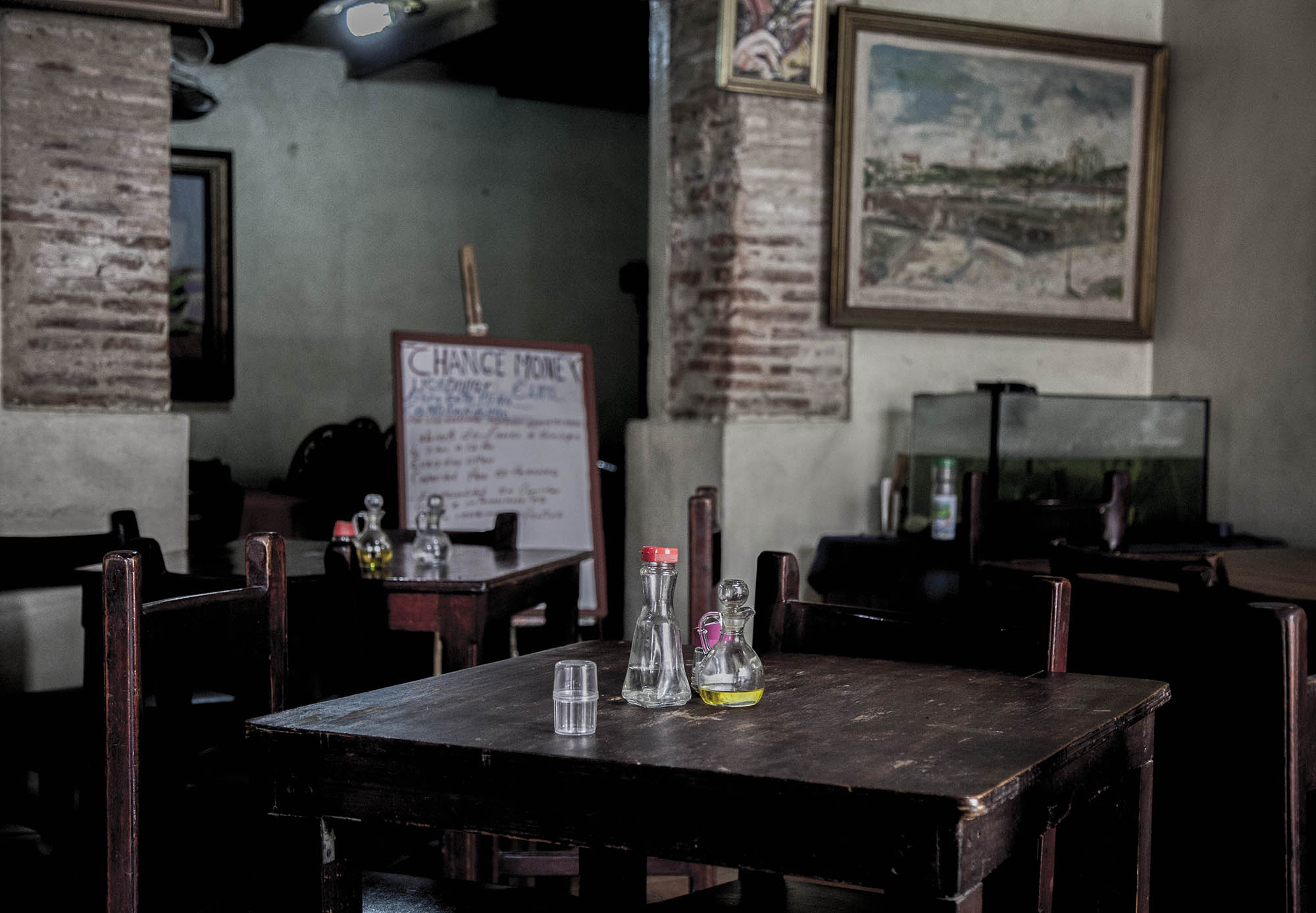
Where to Eat: Skip the tourist traps and look for places packed with locals. While not a comedor (canteen) in the traditional sense, Mesón de Luis on Calle Hostos had the feel of a warm, family-run spot. It wasn’t fancy, but the food was everything you’d hope for in a Dominican meal — fresh, flavourful, and made with love.
Nightlife and Music — Feel the Dominican Vibe
If food brings people together in Santo Domingo, music is what makes them move. At night, the city pulses with the rhythm of merengue and bachata. Whether you’re in a club, a bar, or just walking down a lively street, it’s impossible not to get caught up in the energy.
I remember wandering into a shop one evening to buy a bottle of water and finding myself in the middle of an impromptu dance party. The employees turned up the music, started dancing between the aisles, and before I knew it, I was clapping along. Moments like that — unplanned and full of joy — are what make Santo Domingo special.

On Sunday night, I stumbled upon my standout experience: live dancing at the Monastery ruins. It felt like stepping into a scene straight out of a movie — locals and visitors alike swayed to the music, the echoes of merengue filling the old stone walls with life.
It wasn’t polished or curated for tourists; it felt raw and alive.
Where to Go: If you’re looking to experience the nightlife but don’t want to feel out of place, head to Zona Colonial. The area is lively but welcoming, with locals and travellers mingling in bars and outdoor plazas. Some places have live bands, and it’s easy to find somewhere to dance or just sit back with a drink and enjoy the vibe.
Tip: For a safer and more authentic experience, go with a small group or ask locals for recommendations. Clubs that play merengue and bachata draw a great crowd, and you’ll quickly find yourself surrounded by people who just want to dance and have a good time.
Practical Tips for Visiting Santo Domingo
Here are some things you need to know for a smooth trip to the Dominican capital.
Is Santo Domingo Safe?
Safety in Santo Domingo is a mixed bag, but like many cities, it comes down to awareness and common sense.
- Neighbourhoods to avoid: While Zona Colonial and Gazcue are generally safe during the day, other areas like Villa Francisca and parts of Chinatown can feel sketchy, especially after dark. Locals were friendly, but I did get warned a few times to keep my backpack on my front and avoid walking alone at night.
- Staying safe: Stick to well-lit areas, avoid flashing valuables, and take Uber instead of hailing a taxi off the street. I found locals eager to help. Simple precautions go a long way.
- How I felt: As a solo traveller (at least on the first day), I was cautious but never felt outright unsafe. The mix of bustling streets, late-night music, and genuine hospitality left me more alert than anxious.
Tip: Trust your instincts and ask locals for advice — they know the city better than anyone.
How to Get Around Santo Domingo
Navigating Santo Domingo can be an adventure, but there are options for every style of travel:
By Uber
The easiest and safest way to get around the city. It’s affordable, reliable, and avoids the hassle of negotiating fares.
By Taxi
Available but often overpriced. Always agree on the fare before getting in.
By Public Transport
Caribe Tours and local buses (known as guaguas) are good for day trips out of the city but can be chaotic. If you don’t speak Spanish, stick to Uber for simplicity.
On Foot
In areas like Zona Colonial, walking is the best way to explore — just be mindful of traffic and uneven sidewalks.
Where to Stay in Santo Domingo
Santo Domingo offers a range of accommodations for every budget and style.
Budget
Small hostels and guesthouses in Zona Colonial are perfect for backpackers or solo travellers. I stayed at La Choza Guesthouse with a shared courtyard where the owner made me feel at home.
Mid-Range
Boutique hotels in restored colonial buildings offer character and comfort. Look for properties around Calle El Conde — charming, central, and within walking distance of everything. One you might consider is Hostal 53 Boutique Santo Domingo.
High End
If you’re looking for luxury, El Embajador or JW Marriott are top choices. With stunning pools, excellent service, and modern amenities, they’re ideal for relaxing after a day of exploring.
Tip: Staying in Zona Colonial gives you easy access to history, cafés, and nightlife while still being safe and convenient.
So, Is Santo Domingo Worth Visiting? My Verdict
Santo Domingo is a city of contrasts — historic yet modern, gritty yet beautiful — and that’s where its allure lies.
Who will love it?
- History buffs who want to walk in the footsteps of explorers in the Zona Colonial.
- Foodies ready to dive into La Bandera and sip strong local rum in the Malecón breeze.
- Adventurous travellers who enjoy markets, late-night dancing in corner stores, and exploring beyond the polished façade.
Who might not?
- Visitors looking for an all-inclusive resort bubble with pristine Caribbean beaches and nothing more. If you’re chasing postcard-perfect views without the noise, Santo Domingo might not hit the mark (head to Punta Cana instead).
- Those expecting a squeaky-clean tourist experience — Santo Domingo thrives on its energy and edge.
For me, Santo Domingo felt like a place where the past and present live side by side. Its edges are rough, its energy is infectious, and its people make the city come alive.
It’s gritty, it’s beautiful, and it’s real — and that’s exactly why I think it’s worth visiting.
FAQs — Quick Answers to Common Questions about Santo Domingo
Or as I like to call it, everything you were too shy to ask but really need to know.
Is Santo Domingo safe for tourists?
Yes, but with caution. Stick to well-populated areas like the Zona Colonial, avoid walking alone at night, and be mindful of petty theft, especially in crowded markets.
How many days should I spend in Santo Domingo?
1–2 days is perfect for exploring the highlights — Zona Colonial, the Malecón, and a taste of local food and culture.
What is Santo Domingo most famous for?
Santo Domingo is renowned for being the oldest European city in the Americas, with its UNESCO-listed Zona Colonial and its vibrant cultural scene.
What’s the best time to visit?
The best time is during the dry season from December to April, when the weather is warm and less humid, making sightseeing much more pleasant.
Final Thoughts and Travel Resources
Santo Domingo might not be for everyone, but if you’re after a mix of history, culture, and authentic local life, it’s a city worth experiencing. It’s not polished or pristine, and it doesn’t try to be. Instead, it’s gritty, alive, and refreshingly real — where cobblestone streets tell stories of the past, and vibrant markets, music, and neighbourhoods bring you right into the present.
For me, it was those contrasts that made Santo Domingo memorable: sipping a cold drink in a quiet colonial courtyard, walking the bustling Malecón at sunset, and exchanging smiles with street vendors over fresh fruit. It’s a place where history and everyday life coexist — imperfect but full of character.
Your Next Steps
- Save this guide for when you’re ready to explore Santo Domingo - links below.
- Check out related posts to help you plan your trip: An Epic 10-Day Itinerary for Visiting the Dominican Republic
- Share your experience! Have you been to Santo Domingo? Did it surprise you? Drop your tips, memories, or favourite spots in the comments — let’s keep the conversation going.
Whether you’re a first-time visitor or just curious, I hope this guide helps you experience Santo Domingo for what it is: imperfect, vibrant, and unforgettable.
Happy travels, and I’ll leave you to discover the streets of Santo Domingo for yourself!

[…] near Santo Domingo, these seashores convey you two sides of coastal life: the laid-back allure of Juan Dolio, the […]